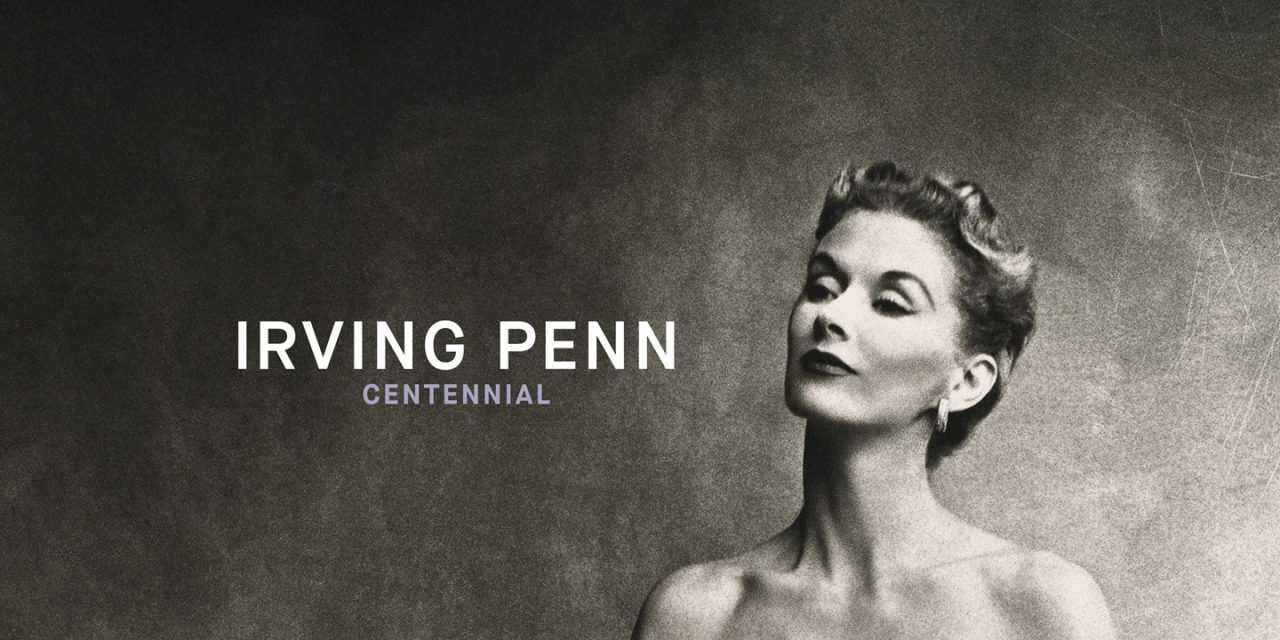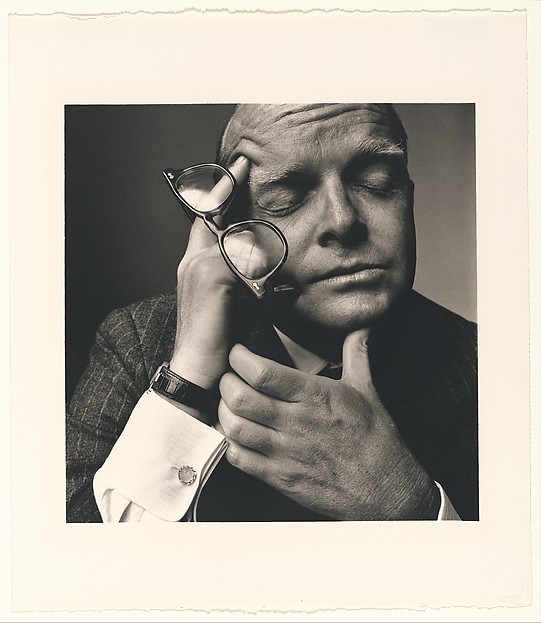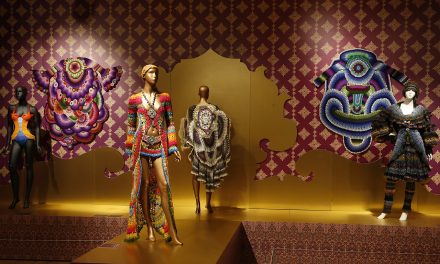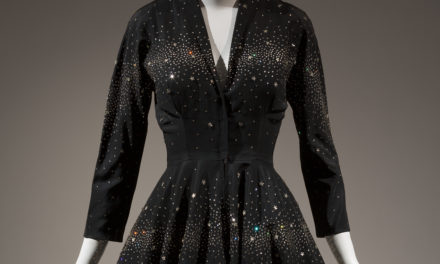Born one hundred years ago on June 16, 1917, the Metropolitan Museum of Art celebrates his 70-year career with the “Irving Penn: Centennial” exhibit, showcasing over 150 of the artist’s photographs. From collections of Vogue photographs and portraits of the most influential artists of the 20th century, to still life renderings of everyday objects and photos of people from all over the world, Irving Penn’s images capture audiences even today. They show how he saw the world through his camera, and how he wanted us to look at the world.
Fig. 1 - Irving Penn (American, 1917-2009). Woman in Chicken Hat (Lisa Fonssagrives-Penn), New York, December 1, 1949. Gelatin silver print; 38.3 x 36.5 cm (15 1/16 x 14 3/8 in). New York: The Metropolitan Museum of Art. Promised Gift of The Irving Penn Foundation. Source: The Metropolitan Museum of Art
Fig. 2 - Irving Penn (American, 1917-2009). Truman Capote, New York, June 1965 (printed 1968). Platinum-palladium print; 40.2 x 39.2 cm (15 13/16 x 15 7/16 in). New York: The Metropolitan Museum of Art, 1986.1206. Purchase, The Horace W. Goldsmith Foundation Gift, through Joyce and Robert Menschel, 1986. Source: The Metropolitan Museum of Art
Fig. 3 - Irving Penn (American, 1917-2009). Locomotive Fireman, 1950 (printed 1967). Platinum-palladium print; 42.8 × 32.8 cm (16 7/8 × 12 15/16 in). New York: The Metropolitan Museum of Art, 2014.268.31. Purchase, The Lauder Foundation and The Irving Penn Foundation Gifts, 2014. Source: The Metropolitan Museum of Art
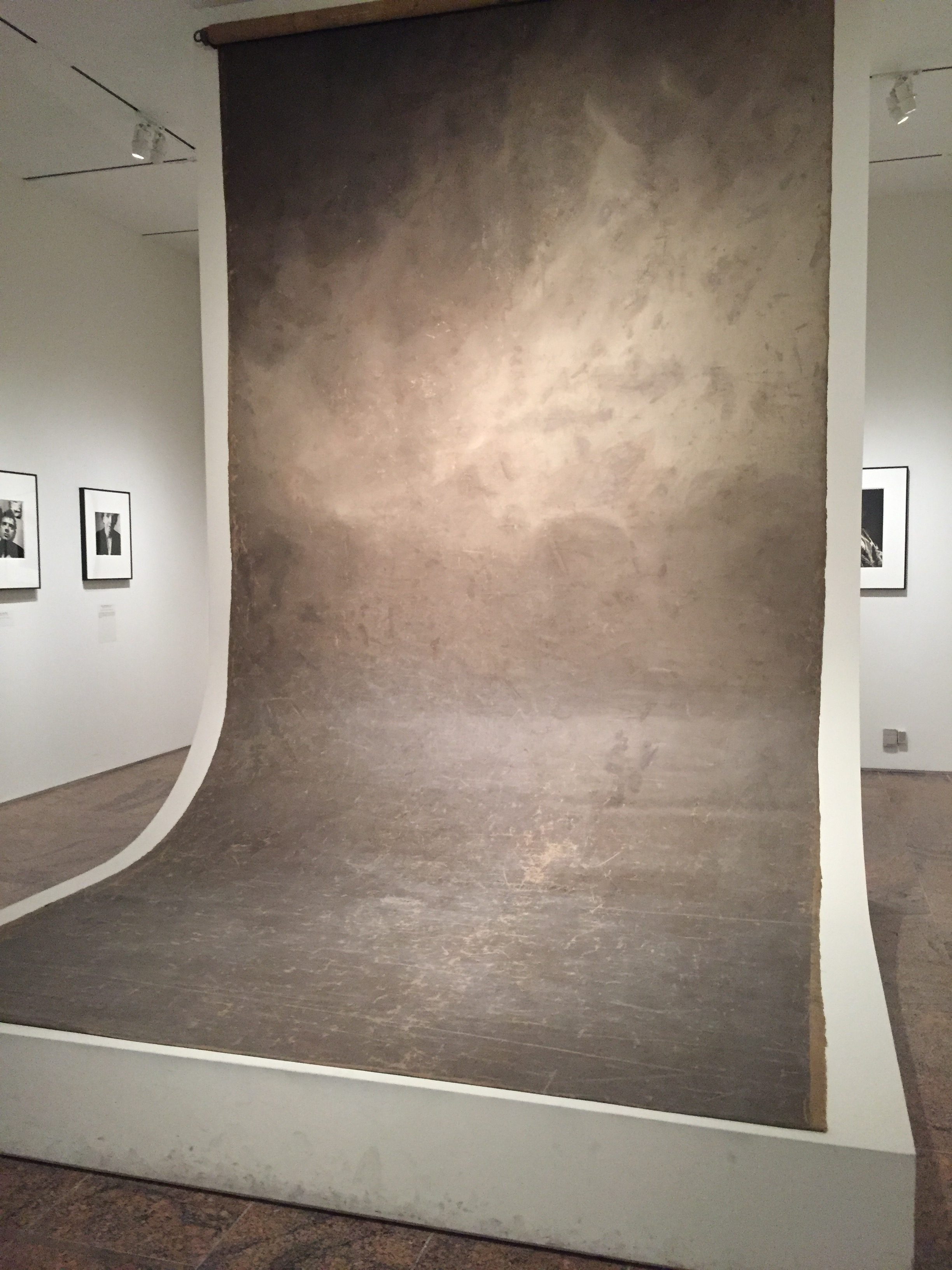
Fig. 4 - Unknown. Irving Penn Studio Backdrop. Canvas. New York: The Metropolitan Museum of Art. Source: Author's own image
References:
- Foresta, Merry A. “Irving Penn: The Passion of Certainties.” In Irving Penn: Master Images, 1-13. Washington DC: Smithsonian Institution Press, 1990.

